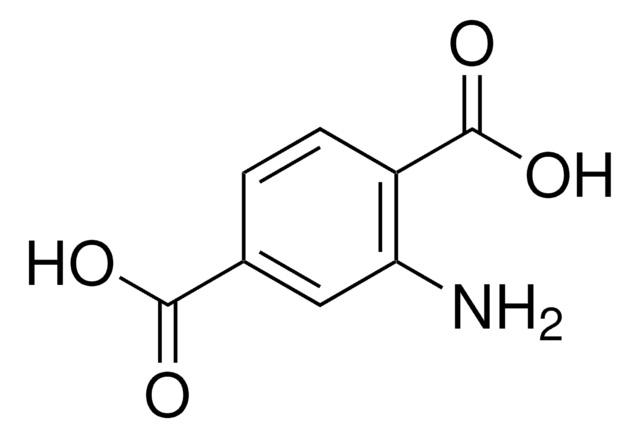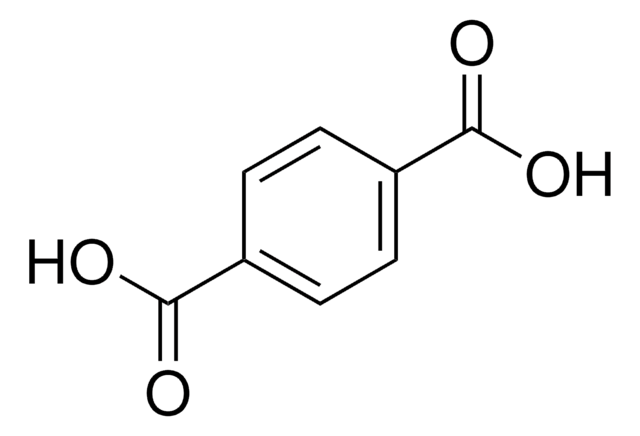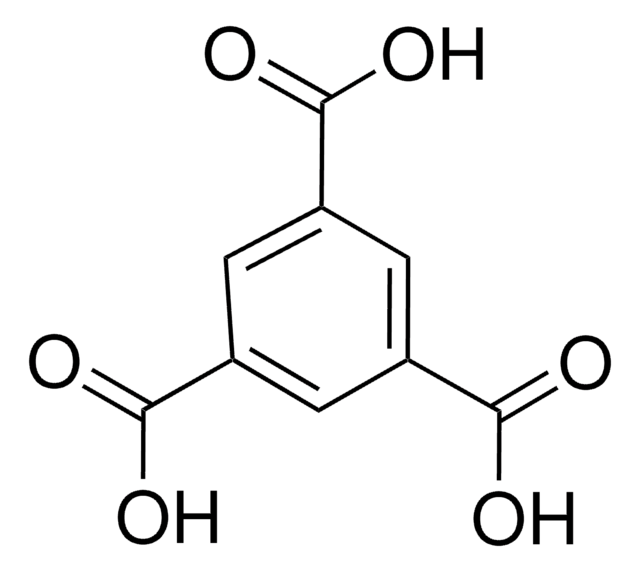221880
Zirconium(IV) chloride
≥99.5% trace metals basis
Sinónimos:
Tetrachlorozirconium, Zirconium tetrachloride
About This Item
Productos recomendados
grado
for analytical purposes
Nivel de calidad
presión de vapor
1 mmHg ( 190 °C)
Ensayo
≥99.5% trace metals basis
Formulario
powder
idoneidad de la reacción
reagent type: catalyst
core: zirconium
características de los productos alternativos más sostenibles
Catalysis
Learn more about the Principles of Green Chemistry.
sustainability
Greener Alternative Product
impurezas
≤5000.0 ppm Trace Metal Analysis
temperatura de transición
sublimation point 331 °C
densidad
2.8 g/mL at 25 °C (lit.)
aplicaciones
battery manufacturing
categoría alternativa más sostenible
, Aligned
cadena SMILES
Cl[Zr](Cl)(Cl)Cl
InChI
1S/4ClH.Zr/h4*1H;/q;;;;+4/p-4
Clave InChI
DUNKXUFBGCUVQW-UHFFFAOYSA-J
¿Está buscando productos similares? Visita Guía de comparación de productos
Descripción general
Aplicación
Direct amide formation from unactivated carboxylic acids and amines
Palabra de señalización
Danger
Frases de peligro
Consejos de prudencia
Clasificaciones de peligro
Met. Corr. 1 - Skin Corr. 1B
Riesgos supl.
Código de clase de almacenamiento
8A - Combustible corrosive hazardous materials
Clase de riesgo para el agua (WGK)
WGK 3
Punto de inflamabilidad (°F)
Not applicable
Punto de inflamabilidad (°C)
Not applicable
Equipo de protección personal
Eyeshields, Faceshields, Gloves, type P3 (EN 143) respirator cartridges
Elija entre una de las versiones más recientes:
¿Ya tiene este producto?
Encuentre la documentación para los productos que ha comprado recientemente en la Biblioteca de documentos.
Los clientes también vieron
Global Trade Item Number
| Número de referencia del producto (SKU) | GTIN |
|---|---|
| 221880-100G | 4061838777638 |
| 221880-500G | 4061838777645 |
| 221880-5G | 4061838777652 |
Nuestro equipo de científicos tiene experiencia en todas las áreas de investigación: Ciencias de la vida, Ciencia de los materiales, Síntesis química, Cromatografía, Analítica y muchas otras.
Póngase en contacto con el Servicio técnico












